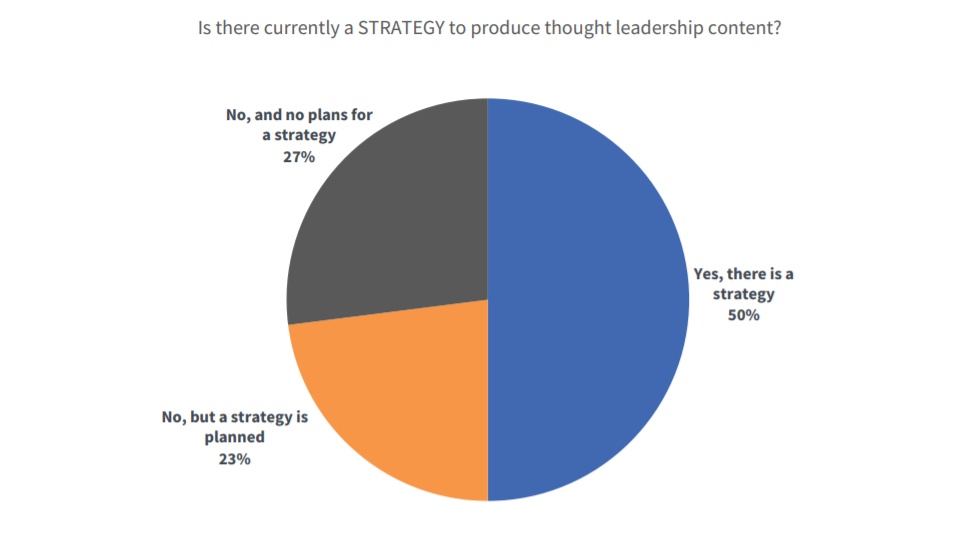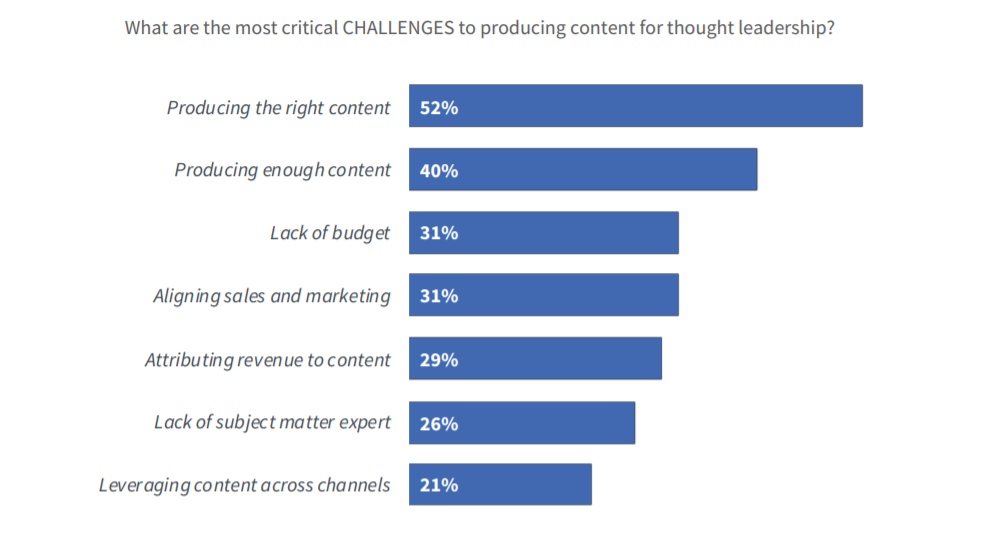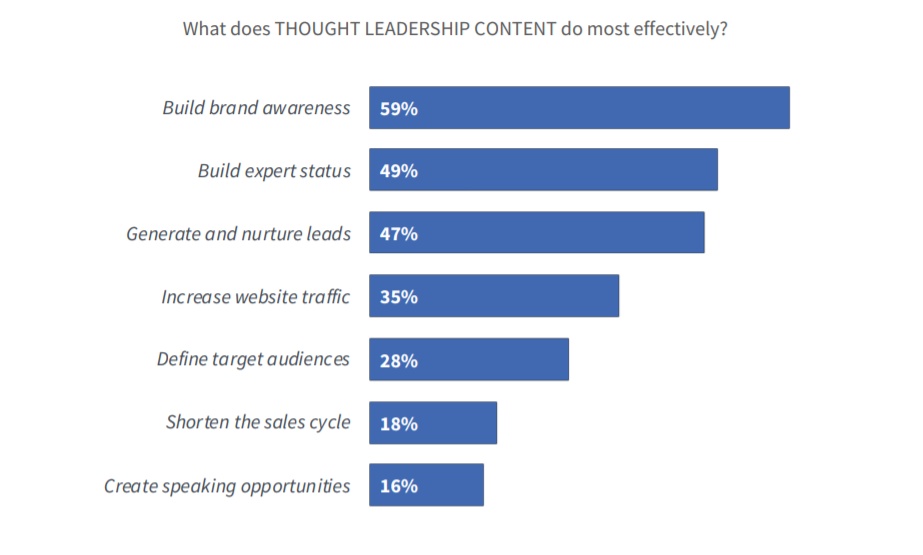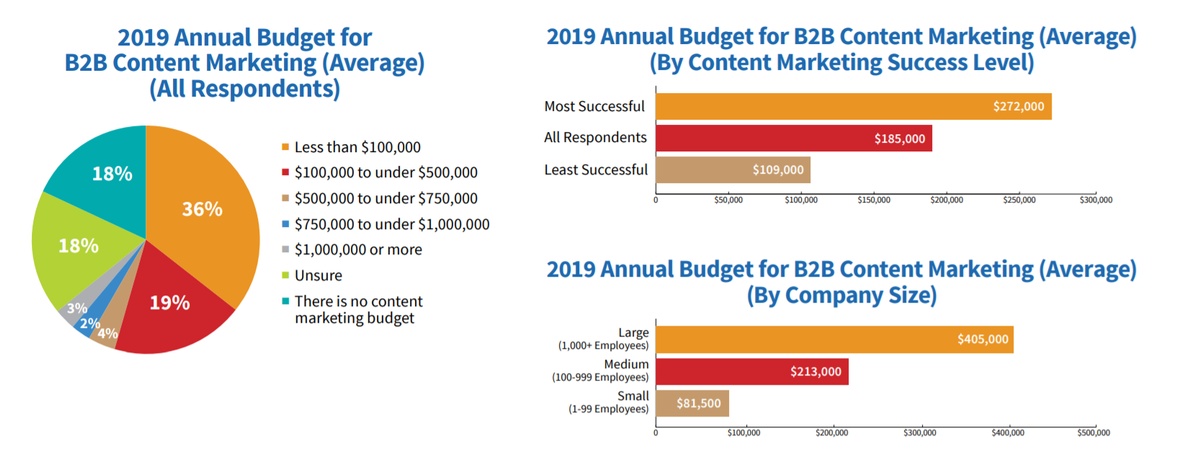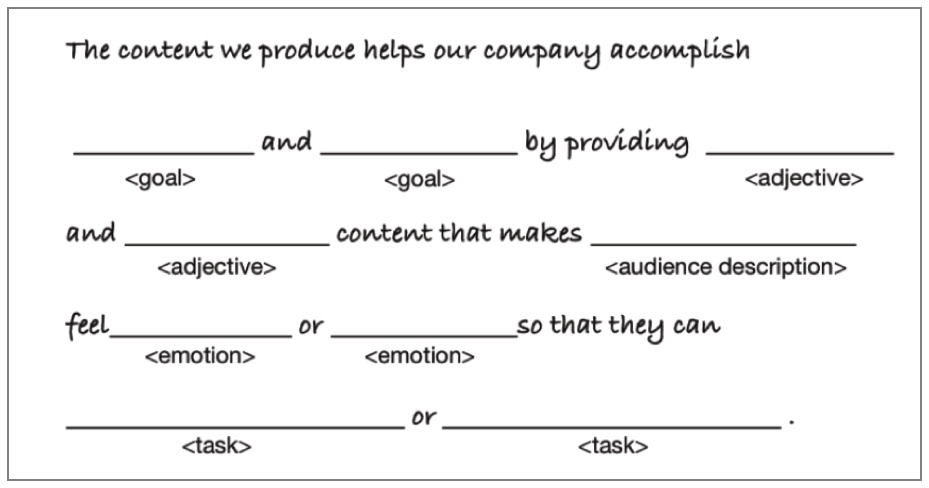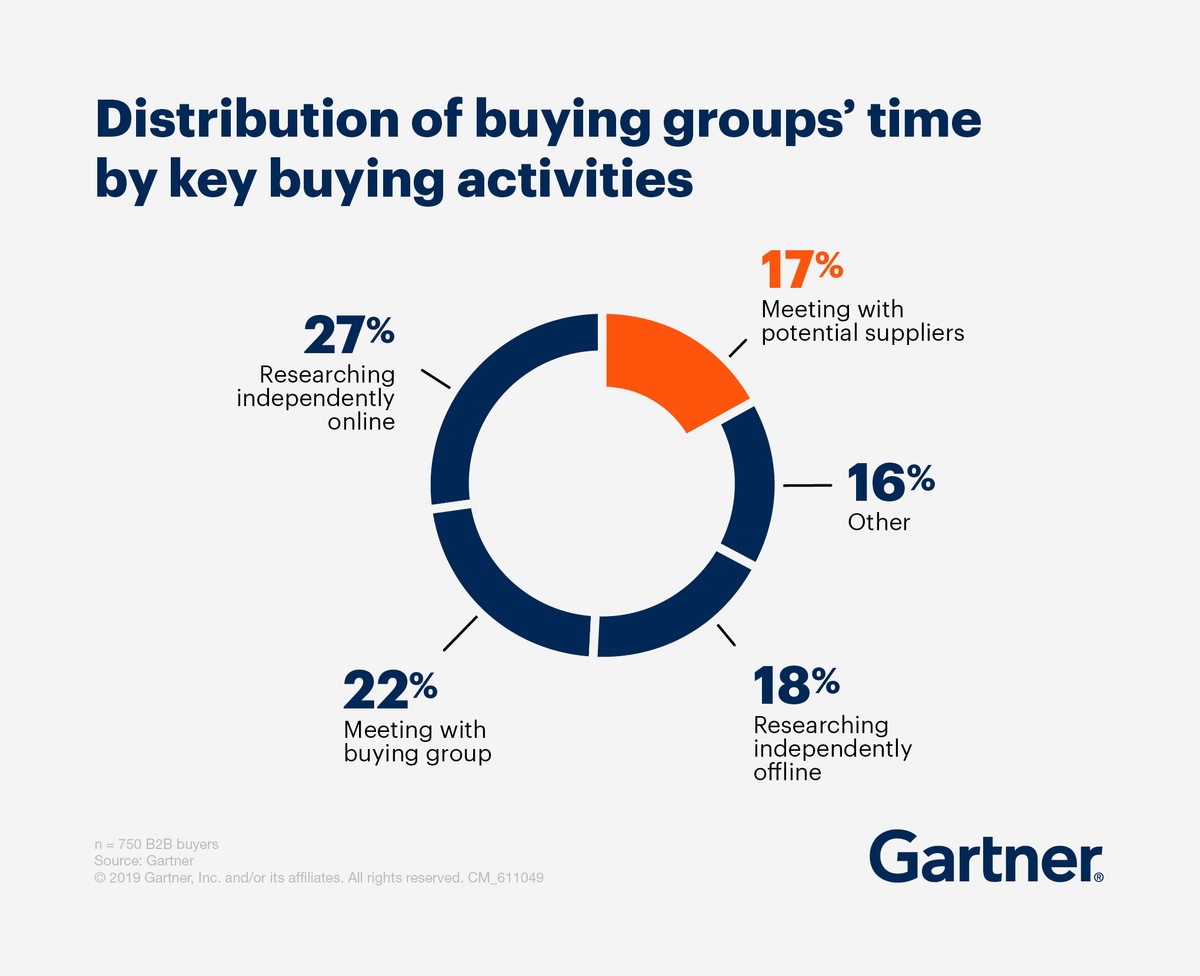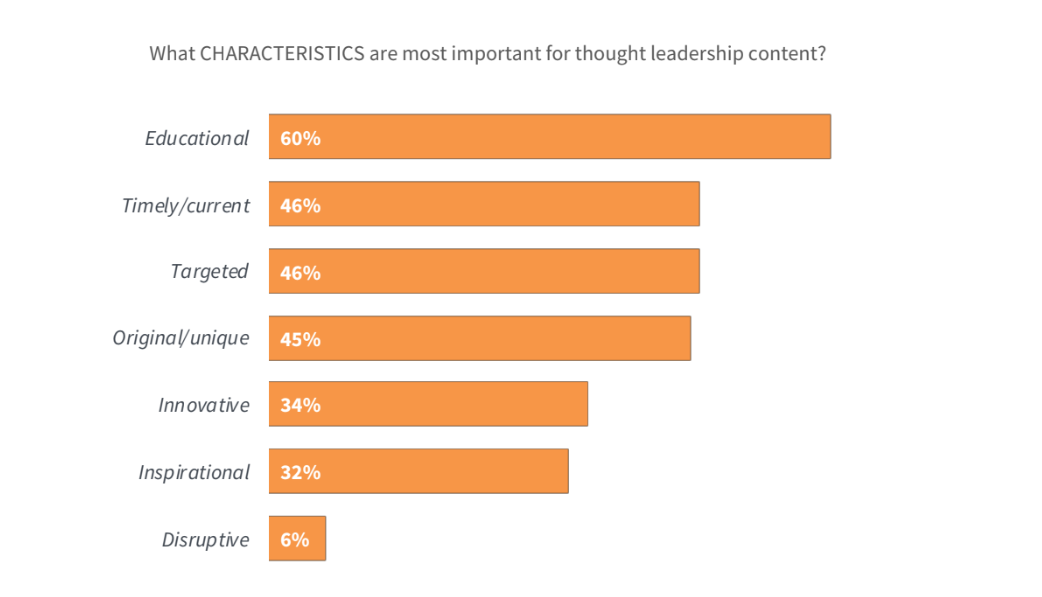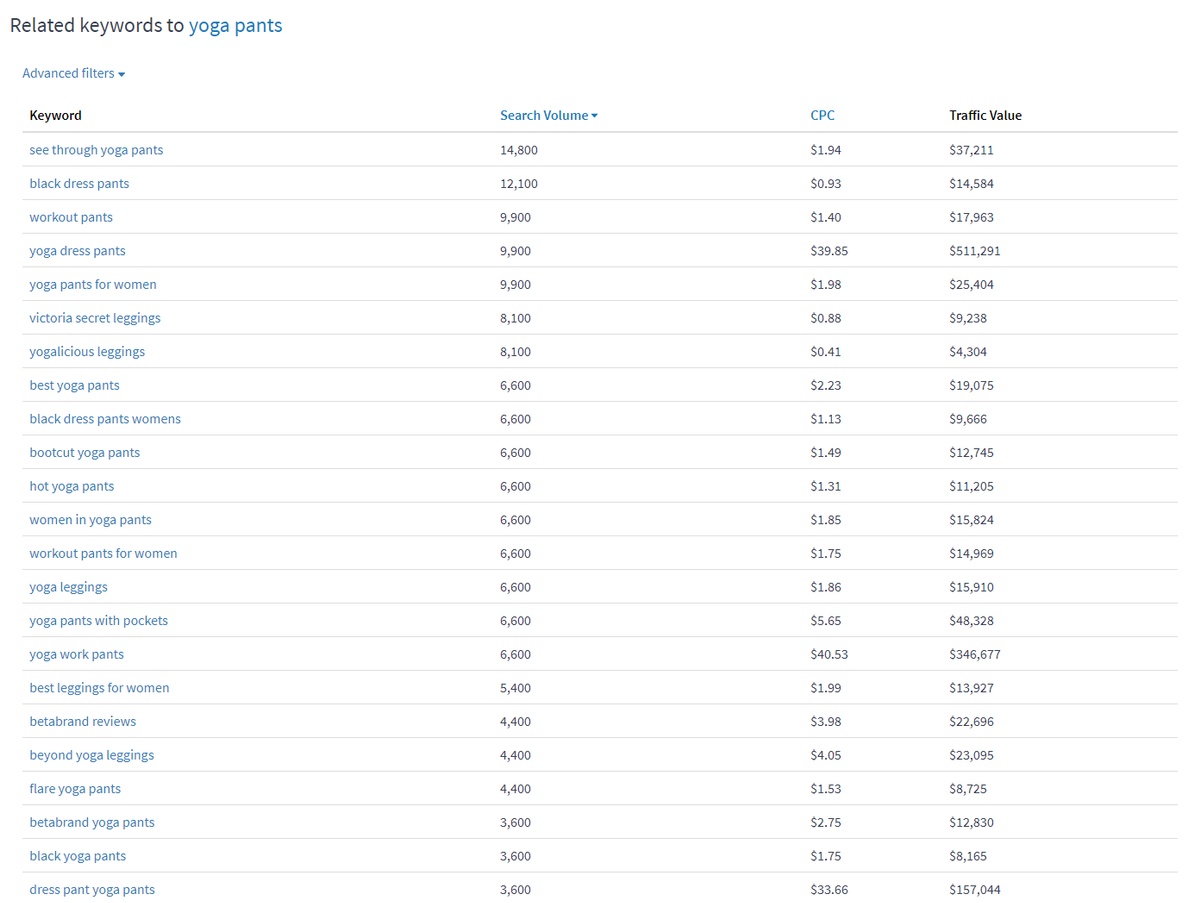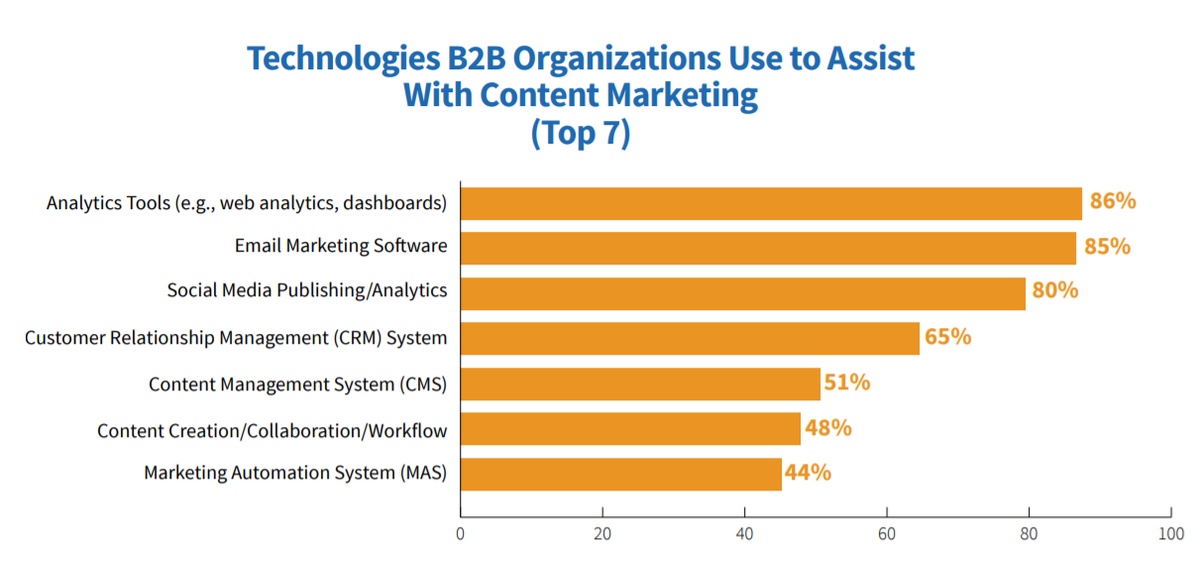The (Apparently) Secret Reason Why Developing a Content Marketing Strategy is Awesome
When you think about it, the effectiveness of your marketing boils down to content.
Content marketing spans everything: from your social media copy and images down to your email marketing and blog posts.
Your content is your #1 sales AND marketing team member.
That is, it should be. (Keep reading... You'll be "seeing ROI" shortly.)
"Content is EVERYTHING."
The implementation of your content marketing strategy introduces new prospects to your brand, generates leads, and encourages your leads to buy.
And not only that, it gets your audience to buy from you instead of the other guys.
(Soon, we'll cover content marketing "strategy" vs. "plan." This guide itself has a flow designed for the intent that just clickbaited deservingly earned your click. Read the whole thing. If I'm wrong, Publicity.ai buys you a beer. I'm CEO so I can do that.)
Why is it so bad to do Content Marketing without a Strategy?
A military commander wouldn’t jump into a new offensive without a strategy –soldiers would die.
Why would anyone take on the competition without a content strategy? Foolishness!
As it turns out, 59% of B2B marketing organizations still lack a documented content marketing strategy.
Without a strategy and proper analytics (which we'll cover later), you can’t even tell if your content marketing is doing what it’s supposed to do.
Annual research from Content Marketing Institute consistently shows that a documented strategy is often a key indicator of content marketing success.
Developing and implementing a data-driven content marketing strategy is the secret to squeezing every golden drop of ROI from your content, earning the best organic traffic also known as "BUYERS," and breaking your reliance on paid media.
Yep, it saves you money long-term.
Growth hack alert!
Documented Content Strategy is awesome, but why now decide to implement THIS Guide? (by Publicity.ai)
Short answer.
Our results creating and implementing such strategies for other people (Publicity.ai customers) have world-class ROI.
...says $1+ Billion equity value created from $100+ million in new sales by our customers converting new visitors earned for them from content marketing and SEO by Publicity.ai.
For "only" the $12 million they've invested since 2015.
That is 10,000%+ shareholder ROI and 1,000%+ traditional hard cash ROI.
Note: For those who are interested, request our measurement methods and customer results via in-app chat (additional data available). We happily invite our audience to join us in these new, important conversations about standardizing marketing measurement and optimizing ROI.
Why Content Marketing & SEO by Publicity.ai Are Different
Ah, 2015... when forward-lookers united to work on marketing's "absolute maximum" problem:
True "Optimization" of ROI
All (human) stewards of marketing results are limited by a lack of access to additional marketers capable and willing to further increase those results.
These limits directly apply to every marketer and marketing team that could exist (at this time).
It's not an inherently physical limitation.
Unlike how our access to desirable books was directly limited by the heights of... buildings.
It's an inherently human limitation.
Like how our access to desirable URLs was directly limited by the heights of... (human) cognition.
Similarly and explicitly, marketing ROI can only be literally optimized by what will be built by software people... or so we try.
But marketers CAN get the "Maximum ROI" possible by humans, which is definitely more than any of us really need.
And YOU should!
(Real nerds already know what those parentheses were about. True optimization is coming... Interactive and adaptive, beyond our imagination! Btw we're hiring. We might not have your dream job listed but if you're capable and willing...)
Learn To Do Content Marketing & SEO The "Maximum ROI" Way
We want to help you "copy our results" (or at least a useful thing or two). With enthusiasm!
Why share if it's so good?
It's a solid strategy for our content marketing, as you'll soon read exactly why.
We've seen a lot. We've done a lot. We measure a lot. So take it from us:
"Your content marketing can’t compete at the top of any worthwhile market in 2024 without a well-researched and documented strategy."
...and we can only help you get there when you now decide to let us by implementing THIS guide!
So buckle up. Helmets are optional.
(Gah, we likely increased the bounce rate of new organic traffic with this "we're great so trust us" section. Though maybe it increases average time on site... and you're still reading, so more might actually get the results they want because they IMPLEMENT. Finally, on to the content!)
What is a Content Marketing Strategy?
Content marketing strategy involves two major things: your content marketing and your strategy.
Let’s start with the “content marketing” part.
What is Content Marketing?
Content marketing is
a type of marketing that involves the creation and sharing of material (often online media such as videos, blogs, and social media posts) that does not explicitly promote a brand but is intended to stimulate interest in its products or services.
(inspired by Oxford Languages)
How to do marketing with your content. Sounds great.
Best practices for content marketing include how to best produce and publish pieces of content like blogs, guides, YouTubes (or other search-indexed videos), and podcasts to educate and inform your target audience to meet your underlying business goals.
But pay attention to this part: “does not explicitly promote a brand.”
(You're going to learn our proven data-driven methods to choose the ideal social media platforms, formats, and types of content marketing for your specific business to reach and convert your ideal target audiences.)
In other words, your content marketing is how to stimulate interest in your business without jamming your sales pitches down their throat.
Pay close attention as you read through this entire guide, and notice solutions (you can purchase) to problems only appear in relevant moments. Learn from these too, whether or not you try/buy.
Okay, so what about your strategy?
Content Strategy vs. Content Marketing Strategy
Content strategy is
the planning, development, and management of content—written or in other media.
(inspired... actually, that one was spot on by Wikipedia)
How to get content done. Love it.
Best practices for content strategy include how to best configure and use analytics, data, and what should seem like endless research on how to understand your target audience and types of content to reach, engage, convert and build loyalty with them.
It’s all the things that happen behind the scenes to develop winning content.
So, putting it all together...
What is Content Marketing Strategy?
Content marketing strategy is
the collection of plans, processes, and guidelines that a business uses to create and distribute their online content for the purpose of attracting and retaining a clearly defined audience and driving customer action without explicitly promoting their brand except within value-added context for their audience's intent (generally or in the moment consuming any given piece of content).
What is the difference between Content Marketing Strategy and Content Marketing Plan?
A content marketing strategy is exactly what we just defined. It specifies exactly WHAT content you're going to produce and WHY.
A content marketing plan is the collection of tactics and people involved in implementing your strategy. It specifies exactly HOW you're going to implement your strategy, including WHO produces content WHEN, and WHERE content is published, managed and measured.
Keep reading this guide, implement what you learn, and you'll be well on your way to a kickass version of both...
For Maximum ROI.
Why Develop a Content Marketing Strategy?
There’s no way around it:
Categorically, inbound marketing is more effective than outbound tactics —end of story.
It’s tough for me to say that as the guy who led the growth of Publicity.ai prior to 2023 primarily through outbound while we, ironically, seem to have become the highest average ROI provider of content marketing & SEO for US businesses, I digress. (Ping our in-app chat for stats.)
Instead of bombarding cold leads with emails and calls to get attention, content marketing lets you demonstrate your value through informative blogs, guides, and similar content.
That’s why content marketing generates 3x as many leads (+200% more) yet costs 62% less than traditional outbound tactics.
Plus, 70% of people would rather learn about your company through articles instead of ads.
It seems most would rather learn about you by content instead of practically anything else you could reach them with.
(If you have curiosity and budget to at least try a premium content marketing ghostwriting service once –including done-with-you strategy– then drop a quick message in our in-app chat about our Bullseye Content™ services, for one thing only: "Content Worthy Of Top Rankings.")
B2B Content Marketing? "F yes."
Content marketing isn’t just for consumer brands, either. Given the high risk involved in B2B transactions, a comprehensive B2B content marketing strategy is even more critical.
It’s no surprise that 59% of B2B marketers surveyed say blogs are their most valuable marketing channel, delivering 67% more leads every month and 434% more indexed pages on average.
(If we're ever quoting statistics but each one isn't directly linked to a source, just look to the most recent statistic that was linked –it's all there.)
Implementing Your Content Marketing Strategy NOW Is Important
Let me tell you, from personal experience...
It's OK if you have felt like you "should have" started by now, or taken it more seriously:
In 2011-2013, I was getting flown around the country to speak to rooms of 'internet marketing ballers' about how to maximize their SEO.
(Back then, "Internet Marketing" is what we called "digital marketing" –or perhaps just "marketing" in 2024– and it was awesome. Content marketers and influencers weren't a thing yet, and everyone understood and paid for what only SEOs can do... on purpose, anyway.)
Since 2015, I've been heads-down with our team building Publicity.ai, driving hundreds of millions in new sales for our customers by our content marketing & SEO services...
And, as of writing, less than $500,000 for ourselves.
Just between us... that's insane, right?
I am personally telling you that whatever your relationship with content marketing (& SEO) was up until this point, it's OK.
What is NOT OK is continuing to wait.
The change you want starts with you.
I decided.
Then I drove internal buy-in.
So now we've decided to stop being a "skinny chef" and start implementing, with this very guide.
(It's important to get buy-in on teams larger than 1, no matter your job title. On teams of 1 you still have to commit to yourself.)
And I formally invite you to commit to you, me, (your Publicity.ai consultant,) and your team to take it more seriously, starting this very moment!
We've made the decision and it feels dang great. Even if it takes longer to get ROI than outbound.
That's kind of the point, see?
The content marketing you want starts with your metrics.
(In B2B, B2C, B2Everything. We have B2B stats so we're using those.)
59% of B2B marketers lack a documented content marketing strategy –like I said, it's OK, you're here now, and you'll be documenting momentarily.
Not only that, but nearly half don’t use KPIs to track results, and 57% don’t even measure their content marketing ROI.
More than half of business respondents, from small business owners to Fortune 500 CMOs, use content marketing to drive revenue and build loyalty but don’t have a concrete strategy and couldn’t tell you whether their content marketing actually profitable.
Is this sacrilege to marketing's scientific savior on most high, ROI?
Yep.
How thoughtful are thought leaders with thought leadership content?
Even with thought leadership content marketing –a lynchpin in B2B– half of all organizations admit their current strategy falls short:
Building a dedicated strategy for thought leadership content marketing makes a MASSIVE difference too.
Once you analyze your audience and get everything mapped out, you know how to position yourself as a thought leader in your industry, in the hearts and minds of potential BUYERS.
And with that knowledge, you can allow other people to produce content growing your position as that thought leader, building your expert status and brand awareness (with other benefits we'll explore shortly), if you're into that kind of thing.
(Even THIS guide is Bullseye Content™ by a Publicity.ai ghostwriter. Sure, I'm 100+ hours into adding "voice" and exercises you'll be implementing... but you never would have guessed, right?)
"Strategic mapping is key for survival," says data.
Jalali Hartman, Head of the AI Lab at Perfect Audience, presented some enlightening research on business performance averages during and after major economic downturns.
Look at how focusing on strategy impacts your business trajectory:
Simple, yet comprehensive.
Unsurprisingly, over half of business respondents say the most significant challenge holding them back is knowing what type of content to create:
Clearly, strategy is the answer.
When you study your audience, when you know them inside and out, when you document and implement what you know… there’s little question of what type of content to produce.
(Or have produced on your behalf by expert content marketing ghostwriters like those recruited, trained, and managed for you by Publicity.ai.)
Add thought leadership to your content strategy and you can expect some incredible benefits:
Is this guide building brand awareness?
Building expert status?
Generating and nurturing leads?
Increasing website traffic (especially via your much-celebrated social shares)?
Shortening the sales cycle?
Even creating speaking opportunities?
You tell me.
...seriously, please tell me. In the comments. Or chat. Or social media. I read it all.
We need to show Optimistic Traction as you're going to learn about in the next section so, sincerely, please tell us if you're liking the content or what could be better/different/added.
(We, er, "best practices" suggest making a note now to so you remember to tell us your thoughts after you finish reading this guide for the first time but before you complete all the exercises.)
How To Create a Budget for Your Content Marketing Strategy
A successful strategic plan in action requires a consistent budget.
Otherwise, your plan will remain "just a plan" forever.
Or at best, it will never come close to its full potential.
"We are serious. Our plan is serious. Have we committed enough resources to make sure it works?" asked every successful leader ever.
It's totally fine if you're starting with what you consider a small budget. Or even with what the business community at large would consider a small budget.
(Dude, I started content marketing & SEO –what we used to just call "SEO"– between college classes that I couldn't afford. Trust the process.)
You can, and definitely should, get more budget as you get Optimistic Traction and show even the earliest signs of ROI.
That's kind of the whole point.
If you’re working with a constrained marketing budget, –and who isn't?– it’s smart to reroute some of your investment from paid channels to content marketing and SEO instead.
That’s no doubt why 38% of B2Bs using paid advertisements have shifted some of their ad budgets towards content marketing.
What Is The Average Content Marketing Budget?
18% of B2Bs are "unsure" of their content marketing budget.
Another 18% are sure they don't have one.
Then 36% spend less than $100,000/year to implement their content marketing.
Of course, the most successful guys spend well over $250,000/year.
Netflix and Disney spend BILLIONS PER YEAR and are having a great time at it.
Just think about the metaphor. It's useful even if not content marketing by our definition.
Actually, I'm re-reading our definition of content marketing now: Netflix and Disney actually are spending billions on content marketing. Good for them (and, you know, us customers of theirs).
Focus up! That's not the point.
The point is the beauty of content marketing and SEO is that some people squeeze downright monstrous ROI from relatively tiny investments, and grow from there.
Of course, certain leaders –you know who you are– prefer to just jump right in and bulldoze your competition, speaking of which...
How To Determine Your Starting Budget "And Beyond" For Content Marketing (& SEO)
I'm going to use the word "small" in the next sentence and it's important for you to know that you will have your own personal definition of the word –use context learned in the rest of this guide and I trust you'll have an idea of what it means for you today.
The main idea is that best practice for a content marketing budget is to start small to prove your initial strategy and show Optimistic Traction, like RIGHT AWAY after you finish reading and doing the exercises.
To satisfy "overly conservative circumstances," –you already know who or what these are if you have them at your company– you'll also have to show explicitly positive ROI.
This is OK, but not ideal since we all want 1) executive-level appreciation for how Content Marketing & SEO done right ramps to the moon and 2) ample cash to invest. It happens.
(Easily and consistently satisfying overly conservative circumstances is one of the reasons we suggest How To Invest Your Content Marketing Budget the way we will in just a minute.)
From our experience leading several brands from "content zero" to "market hero", after Optimistic Traction you then double-down on what's working and keep growing your content marketing & SEO budget to ~25% of your total Sales & Marketing spend.
Certain brands in certain markets should go deep into one content category. Others should go wide. We're here to help if you're unsure.
And perhaps one day increase it beyond 25% of your total S&M budget, once Content Marketing & SEO is proven to earn higher ROI than everything else (that can continue scaling without diminishing returns) in your business.
If you laughed or even did a double-take when I said "S&M" in the previous sentence, you have to share this post. No takebacks!
(By the way, we're certainly biased if not just flat-out wrong about these ideas for your business –please feel free to discuss specifics with us by scheduling time at the above strategy session CTA. Your first consulting hour is free.)
One Smart Way We Learned To Get Faster Time-To-ROI With Your Content Marketing (And Everything Else)
As the world turns, many B2Bs with complex and long sales cycles will never invest 25% of their total sales & marketing budget in content marketing & SEO.
However, many of them will. Such as:
- HubSpot
- Others
Pro-tip: Contribute to your sales process moving faster than competitors' for speed to ROI while investing your content marketing budget. If you can get your product to help, then more power to you!
Remember, "MONEY loves SPEED."
Consider our example and think of ways you can help simplify and shorten your sales cycle.
What are the "key moments" that your leads go through as they become BUYERS?
Ask recent customers. Seriously, ask them. Try to help new leads hit those moments, and only those moments, faster.
Are there any potential partners who can help, directly or indirectly?
Like how agencies just adopt Publicity.ai to speed up SEO consulting research and simplify pitching.
B2B Thought Leadership Content Marketing Budgets And Benchmarks
In most cases, and especially in B2B, we recommend devoting a sizable portion of your content marketing budget towards thought leadership.
A wide majority of businesses only earmark up to 25% of their content marketing budget for thought leadership content creation.
How much should you set aside for thought leadership content creation and distribution?
It depends.
"Talk to us for analysis of your business and market" is all I've got for a one-size-fits-all answer.
The good news is that budgets within budgets aren't needed for you to start.
In fact, there is such a thing as "over-planning" in the beginning –you don't know what will best hit your goals until you test a few things that could work and compare their results.
Just get to your big main starting number for the first quarter or two using everything above.
Once you have your content marketing budget set, you are one step closer to implementing a comprehensive strategy.
How To Invest Your Content Marketing Budget In The Beginning
Before you go blowing investing your new content marketing budget, I would suggest implementing your strategy with your existing resources for the first 1-3 months.
Look at this as a necessary evaluation period so you learn the specific actual challenges that you, your current team, and current solutions face "in production" –that's what us developers call "in real life," or the opposite of "in theory."
Once you've personally "felt the struggle" of implementing your strategy, you can then:
- Analyze your organization's sticking points, or "Throughput Blockers"
- Improve your "Content Marketing Stack" with informed purchasing of software and services
Please don't make assumptions about your Throughput Blockers or what should go in your Content Marketing Stack.
Or worse, make any kind of meaningful investment in Your Stack prior to knowing your needs with certainty. Especially in anything that comes with an annual commitment!
Seriously. DO NOT SKIP THIS LEARNING PERIOD.
(We'll soon share how and when to audit, prioritize and purchase potential solutions.)
The research Ascend2 did on "Thought Leadership in B2B Content Marketing" was enlightening –see the attached report we've linked a million times throughout this post.
Still, I hope in the future they force their survey audience to answer tough questions around content marketing technology and services.
For example, "If you could only have 3 content marketing tools, workflows, or services for the next 3 years, which ones would you choose and in what order? Same question for different types of content marketing?"
Hint, hint, Todd!
Cherished reader, feel free to write a note now so you remember to post your answers in the comments after you finish reading this guide.
Decide on Your Business Goals for Content Strategy at Each Stage of the Sales Funnel
The first step to creating your actual content marketing plan: identifying your goals.
Why start with your goals?
It’s essential to define your goals first so you can use them to guide the rest of your strategy as you continue creating it below.
We love this content marketing strategy template originally inspired by Content Marketing Institute –its simplicity is timeless for getting everyone on the same page, up and down your org chart.
...or just down your org chart, fellow CEOs! Muahaha. Seriously though, this is a CEO/CMO-level conversation that will transform your business if you let it.
Start with your sales funnel.
Between 57% and 90% of the buyer’s journey is DONE before a lead ever contacts your sales team.
A recent Gartner study estimates that buyers only spend 17% of the total journey connecting with potential suppliers. And that 17% is spread out over all potential companies.
In other words, your sales reps only get to influence 5% or 6% of each journey.
"FML," said the VP Sales with little faith in her VP Marketing.
“Okay, but what does this have to do with content marketing strategy planning or goals?” asked everyone else.
Your content is a team member.
And as a team member, your content needs to serve specific roles on both your marketing and sales teams.
It can introduce and educate prospects while gently nurturing leads towards conversion.
Luminary Concept: Your content is a team member. It does the work of sales and marketing at every stage of the buyer’s journey.
Many marketers will tell you to strategize your content marketing plan based on the distinct stages of the buyer’s journey:
- Awareness
- Evaluation
- Decision
Here’s a secret: Those three stages aren’t enough. The buyer’s journey isn’t linear. Not in B2B, anyway.
The B2B buyer's journey a lot more like silly string (link added to encourage shenanigans):
We recommend planning and creating content for your target audience(s) at these stages of the sales cycle because they’re a little more specific:
- Problem identification (awareness) – "What are these red dots on my back?"
- Solution exploration (awareness/evaluation) – "How to get rid of bacne"
- Requirements building (evaluation/decision) – "Best (hyped skincare ingredient) 2024"
- Supplier selection (decision) – "(Best-selling product) vs (Second-best) vs (Your product)"
Your goals for content at each stage of the sales funnel might include:
- Brand awareness
- Demand generation
- Lead generation
- Lead nurturing
- Conversion
- Increasing revenue
- Preventing churn
Once you nail your goals and benchmark current performance for content at each stage, you can plan and produce more relevant content for your target audiences.
Bonus points for estimating competitors' content performance. We can help with that.
Pro-tip: Just plan content for one audience first, your most important BUYER persona (which we'll show you how to research and define in a few moments). Even if you’re doing this for a Really Big Company. Pick one. Ideally, your biggest moneymakers who bring friends, or would if they were so inspired.
How To Choose Your Best Content Marketing KPIs and Track Your Metrics
You’ve got your KPIs, and you’ve got your metrics.
What are Content Marketing KPIs?
Your content marketing KPIs are the quantifiable values you use to track progress towards your goals.
What are Content Marketing Metrics?
Your content marketing metrics are tactical pieces of data to track your content marketing KPIs.
Content Marketing KPI Examples
For example, if your goal is to increase lead generation, one KPI might be your visitor-to-lead ratio, or lead conversion rate (CVR%). How many visitors to your content are converting into leads by signing up for your email list?
You could further measure lead generation KPIs by looking at how your organic, referral, and social traffic to your website improves over time.
Super-advanced KPI measurement maneuver: Measure growth rates, or "velocity metrics," and growth rates of growth rates, or "acceleration metrics." Universally applicable. The 'omg they grew so fast' companies optimize around acceleration.
Individually, metrics like website traffic and social media shares mean nothing.
Your KPIs put your metrics to work tracking progress towards your goals over time.
Check out this visualization of content marketing & SEO KPIs inside a Publicity.ai campaign:
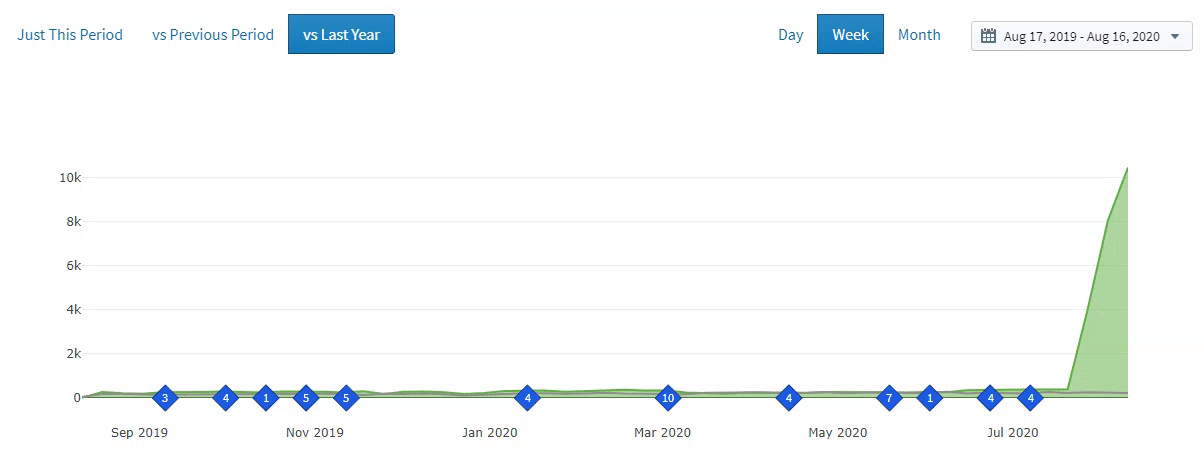
Publicity.ai automatically syncs campaigns with retroactive Google Analytics metrics to help you identify our favorite content marketing & SEO KPIs and work towards your goals faster.
Sometimes, your Publicity.ai campaigns are so rich with new traffic, they even "break" the scale of our performance-over-time charts, as they did above!
(We also have tables showing traffic, engagement, and conversion stats by source/medium. Please let us know via in-app chat if you'd like us to add more KPIs, metrics, or visualizations. Or any new integrations that would be valuable to you!)
Keep reading to learn more about content marketing KPIs and how they intersect with social media marketing KPIs.
Remember, I promised this guide is building on your understanding step-by-step. Stick with it!
Study Your Target Audience(s) and Define Your Content Marketing Buyer Personas
Of all the steps in this guide for building a content marketing strategy, this one might just be the most important.
(Or so would say "ancient wisdom" of the highest-paid copywriters in the world.)
Again, content marketing success is about relevancy!
Marketing is like starting a new relationship.
You wouldn’t move in with a new partner after a few dates –you have to get to know your partner on a deep level first.
Or at LEAST understand the fundamentals of what makes them “tick.”
Well, buyers need to understand enough about your company to “tick” their mental checkboxes before they’ll be comfortable enough to buy from you.
Guess what else?
You need to understand your potential BUYERS if you want to create relevant and valuable content that answers their questions and solves their problems.
We recommend defining and ensuring consistent, specific characteristics for your content to create a congruent brand that is appreciated by your target audience, such as:
The right characteristics and voice for your content marketing will emerge over time.
Inform these guidelines for your brand as you learn more about your market, engage with your audience, and research your competitors.
It's best practice to update your guidelines and standards and keep your content congruent with them as you gain new information or things change.
So start documenting your ideas now... and never stop!
Creating buyer personas is a key to Maximum ROI.
I’m not here to define your exact content marketing personas for you (not without a reassuringly expensive consulting fee, anyway).
But I will show you where to look and how to create useful initial buyer personas that you can enrich over time.
Every organization should plan and document its Ideal Customer Personas (ICPs) to achieve consistent results by speaking to these personas directly and exclusively in each content piece.
You should typically produce each content piece for exactly one well-understood buyer persona.
Though sometimes, your Big Content needs to speak to multiple buyer personas. In those cases, tailor the content to their similarities in intent, language, and everything else. You will do great.
Understanding your audience is the secret to building relevant and valuable content that engages BUYERS.
You can start with a few fundamental factors when creating personas for content marketing:
(B2B) Which Companies Do Your Buyer Personas Work For?
Even if you’re not structuring a specific account-based content marketing strategy, I still recommend nailing down employers as part of your ICPs. Figuring out which organizations –even theoretical– your target audience works for will help you create industry-specific content.
(B2B) Which Other Firmographics Exist for Each Buyer Persona?
Firmographics are like demographics for B2B. You can use them to segment your audience and guide your content marketing strategy. They include things like:
- Job role and responsibilities
- Company size and market share
- Who they report to
- Role in the buying process
- Company location
(B2B & B2C) Where Do Your Buyer Personas Hang Out on Social Media?
In B2B, LinkedIn is key.
However, I also recommend nailing down another platform or two, like YouTube, Twitter, Quora, or Facebook.
Or, of course, Instagram and maybe even Tiktok for you bleeding-edge B2C slayers.
Don’t bother spreading yourself too thin, though. You’ll get better results from your content marketing strategy when you laser-focus on two or three platforms instead of trying to be everywhere at once.
Mad experimenter sidebar: Dude, we’re aware of A LOT and see A LOT of test results. We keep you updated via the Publicity.ai newsletter. Feel free to deepen our relationship via social if you want weird specific tests and insights first, especially test results that were “meh” or worse.
(B2B & B2C) Which Blogs Do Your Buyer Personas Read?
If you want to position yourself as a thought leader, you must add nuance to the conversation.
A super easy, quoting Steve Jobs quoting Pablo Piccaso “good artists copy, great artists steal” way to do that is by reading the same content as your audience so you can say something better.
Or if you’d prefer me riffing on ancient affiliate god wisdom: “RIP and STICK… and IMPROVE!”
(Shoutout StackThatMoney, Smaxor, Nana, Mr. Green, Maynzie, et al... ASW’s Most Luxurious Hair boy has grown up!)
Researching blog sites also comes in handy when it’s time to promote your content.
You can use branded guest blogs and get your content in front of great new audiences while earning high-value backlinks to your brand’s website.
Deep-pocketed content baller CTA: Ping our in-app chat if you might be interested in our help slaying this outright. Five figures minimum. Let us turn your “thoughts” into “leadership.”
(EVERYBODY) What Are The Biggest Problems and Goals of Your Buyer Personas?
After following all the steps above to create your buyer personas, you should have a solid idea of what challenges they face on a daily basis.
Their biggest short-term problems, along with their long-term goals, are perfect starting places for your content marketing strategy keyword research and topic planning.
Ultimately, if you can answer a burning question more effectively/interestingly than anyone else online, you’ve pretty much guaranteed "everyone" will read that blog post.
At the end of the day, effective marketing is about people helping people help themselves (by buying).
Make content that helps people.
Decide Which Types of Content Marketing You Will Create to Meet Your Business Goals
As you build your ideal customer personas, you’ll need to figure out which types of content to create for each persona.
Their stage of the buyer’s journey matters too.
Some types of content fit better in the brand awareness stage, while others are better suited for pushing leads over the edge.
A single buyer consumes 13 pieces of content on average from a single vendor during the buying process.
Best practices for content marketing and SEO include publishing a wide range of content for every ideal customer persona you’ve developed. Ideally, your strategy would include unique or personalized content for each ICP to help them advance through every stage of their buying process (detailed above as we explored Strategy at Each Stage of the Sales Funnel).
Additionally, SaaS, marketplaces, and other "database-enabled businesses" can learn from Canva and take inventory of what they could use for (semi-)automated, SEO-friendly content output and take action accordingly.
And what about thought leadership?
Here are the most effective types of content according to B2B marketers:
Videos for Content Marketing
About half of buyers watch videos during the journey.
Super edgy “put my neck out there” opinion: Post COVID-19, more than half of your best potential BUYERS watch videos during the journey.
Unlike consumers who prefer short pieces of video content, B2Bs watch each video for five minutes or more on average.
Like blog posts and case studies, videos should be highly personalized to your personas so they’re relevant enough to hold the attention and interest of viewers.
See our content marketing attributes exercise for best practices, current industry priorities, and to customize your own content marketing implementation checklist.
Videos work at every stage of the buyer’s journey.
Use them during the awareness stage to educate, during evaluation to nurture leads, or post-conversion to ensure the necessary understanding and actions taken with your products and services to maximize expansion revenue and minimize churn.
Case Studies for Content Marketing
Ah, case studies.
Yes, marketers, the sales team was right –buyers want case studies.
42% of B2B buyers say that during the final stages of the buying process, case studies come in handy for learning about your company, products, and services.
Make sure to develop case studies for a nice range of verticals, and highlight nuance in suboptimal “before” states and ideal “after” goals achieved in at least your big money vertical(s).
The work is worth it.
See, this is why identifying employers for your buyer personas is essential even without ABM: You can use the information to create relevant case studies.
Webinars for Content Marketing
I recently learned that 91% of B2B buyers say webinars are their preferred type of content.
No doubt, they’re useful for educating leads during the evaluation stages of the buying process.
Pull ‘em right down that funnel.
RIGHT DOWN THAT FUNNEL.
Sometimes, the “old ways” are best.
(I’ve physically mailed sales letters and am over 25 in Silicon Valley. Yeah, I'm old, and you might be, too. It’s OK.)
Like whitepapers and eBooks, you MUST make sure your webinars aren’t one big sales pitch.
Webinars require a heavy time investment and lots of trust from your attendees. They’re there to learn something from you –not have your products and services pitched every 30 seconds or listen to your ego-stroking pontification.
This is one of the things that makes me not regret spending the beginning of my career in the Information Marketing industry. They have lots of viable webinar formulas to learn from.
Feel free to ping me (Zeal Caiden) on social for suggestions on which ones you might want to start testing for your offer and market.
Or, you know, just blast some proprietary data like a newly minted boss on respected industry channels and you'll do just fine.
Blog Posts for Content Marketing
71% of B2B buyers consume blogs during their journey.
But publishing blogs isn’t enough: 66% say you need to make it easier for them to access your content.
Meanwhile, 75% want to see original research from you, and 62% want you to take on a deeper thought leadership role.
While blogs work best in the awareness stages of the buying cycle to drive website traffic, you can also develop blogs for evaluation stages (brief but useful examples where we covered goals by sales stage a few sections up).
eBooks for Content Marketing
For lead generation, eBooks are a slam dunk as lead magnets.
Just make sure they’re useful and nuanced.
If you just spit generic information back out into an eBook that someone downloaded after trusting you with their email address, get ready to be mentally bucketed as “Yet Another Worthless No-good” brand –a YAWN brand, if you will...
See what we did there?
Note From A Man Who Has Probably Seen Too Much: People are unpredictable. We’ve seen everything with generic eBooks and the (sometimes downright hateful) reactions they can get.
The point is to crush value delivery for your specific audience in your gated content. Give them an “aha!” moment or two and, wait for the mind read…
“Their web content is pretty good, so I’ll opt-in… WOW, their gated content hits different! I bet if I buy they will rip my galaxy wide open!”
Reports & Whitepapers for Content Marketing
Whitepapers are similar to eBooks in that they’re downloadable PDFs serving as magnets for lead generation.
Your whitepapers, however, should dive way deeper into your topics.
If you want to be remembered and even celebrated by your ICPs, make them in-depth and include unique research and insights.
That’s one reason they work so well for targeting specific buyer personas.
Best practices for content marketing with whitepapers, short and simple. My ghostwriter killed this one.
Good thing our strategy includes editing the work that Publicity.ai content marketing ghostwriters ship to us to help reach and influence our ideal customer personas.
This saves a ton of time, and as our ICPs already know, "time is money, friend!"
Images (Infographics) for Content Marketing
Yep, the modest infographic is a staple in the buyer’s journey for 75% of B2Bs.
Infographics are also versatile enough to use at every stage of the buyer’s journey –even tutorials after a lead converts!
Beyond stats, infographics can make complex topics easier to understand because they’re visual.
People learn and retain information better through visual formats.
Even people without visual as their primary "learning modality" will remember images that stick to big ideas.
Use that to your advantage.
Podcasts for Content Marketing
64% of B2B buyers say they like listening to podcasts during the buyer’s journey –especially in the early stages.
Podcasts are awesome because it feels like you’re in on a conversation with the hosts.
Plus, buyers can learn about your culture and hear from different subject matter experts on interesting topics.
But it takes more than useful data and experience to create a successful podcast.
You need that "X factor" to hold listeners’ interest and attention for an hour or so.
Research and Analyze Your Competitors to Find Smart Content Marketing Examples
I can’t stress enough how important it is to study your competition for content marketing examples if you want to create great content.
And you can’t just research your competition in the early stages of developing your content marketing strategy, then stop.
You “MUST” research your competitors’ content every time you put fingers to the keyboard to create a piece of content.
At least if you want to have an easy time figuring out what matters for Content That Deserves To Rank At The Top (according to The Search Engine's real-time judgment).
And yet, thought leadership content marketing demands standing out from everyone else around.
You can’t engage readers if you’re writing the same thing as everyone else.
Not for Maximum ROI, anyway.
BUT (and this is a big but), you should use competitor content as inspiration.
Download their lead magnets, subscribe to their newsletters, read their blogs.
The goal isn’t to copy their ideas but to see what works for them:
- What types of content perform well?
- Are you missing any major verticals or topics?
- What made you go, “Oh yeah, dang! Look at this right here!”
Pro-tip for easier success with any content format: Any time you see content that stands out to you or was super effective with an audience like yours, add it to your content marketing "swipe file" with comments on specific attributes or tactics you want to test. This "show, don't tell" communication is usually easier and faster –including with yourself during content creation. (We use Droplr boards to capture and share such examples.)
For the sub-1% of you legitimately groaning “our competitors aren’t doing anything useful”: Yeah, ok, find the next best adjacent industry. We’ve done this in quantum computing ffs. "Figure it out."
You can’t impress anyone if you’re creating the same content as everyone else. Aim for disruptive innovation... Dollar Shave Club!
Conduct Keyword Research for Your Content Marketing Strategy
Now we’re digging into the nitty-gritty of actually creating your content itself.
Did you notice that the first half of this post focused solely on content marketing KPIs, measurement, and research?
That’s because comprehensive research within good data sources is the only way to develop a successful content marketing strategy template for your business.
The first tactical step towards creating Maximum ROI content is keyword research.
If you want to reap the full benefits of inbound marketing, you need to squeeze every ounce of organic traffic from your content.
That’s where search engine optimization comes in:
- SEO helps you earn “free” traffic.
- Organic traffic from search engines stays on your site longer than PPC or social media visitors.
- SEO is sustainable, consistent traffic. Even when algorithms change, you can adjust your strategy. (We've informed customers of best practices ahead of rewarding algorithm updates every year since 2015. Just saying.)
- Organic traffic is more trusting because they arrived at your site on their own accord –not through a paid advertisement.
Targeting specific keywords and optimizing your search rankings by appeasing the godlike Google also helps you improve user experience, if you do it right.
Google’s "job" is to answer questions and queries by presenting users with the best content for each search result.
This is why so much of our SEO language –based on our core company beliefs– is focused around making you “genuinely deserve to rank higher than your competitors.”
That means YOUR job as a content marketer is to create an optimal experience for visitors too:
Answer their search queries and their corresponding INTENT (momentary desires) better than anyone else.
Effective keyword research is the only way to do that.
How To Choose and Rank Long-Tail SEO Keywords for Your Content Marketing Strategy
Look, I get it –you’ve got big goals for your content marketing strategy.
You might want top rankings for the keywords that "everyone" is searching for.
Sorry, but that’s not the best keyword strategy.
Unless you’re Buzzfeed. And I doubt you really want to be Buzzfeed.
Not taking shots, guys, just saying most of us don't want to be in the ad-fueled content publishing business!)
Broad keywords contain only one or two words. They might get over 20,000 searches per month, sure, but they’re also putting you up against high competition.
The vast majoriy of content marketers shouldn't try to compete against those Big Sites that have worked at optimizing their content marketing plan for over a decade.
And typically those aren’t even high commercial intent search queries!
Who cares about keyword rankings if they don't ultimately result in BUYERS?
(I mean, go ahead and dilute your retargeting audience if you really want to. We don't advise it.)
We are deliberately oversimplifying when we suggest: Choose long-tail keywords of three-words or more for your content marketing.
Not only are they less competitive, but long-tail keywords are also:
- More specific and thus easier to create highly relevant (personalized) content.
- Tell you more information about the searcher’s intent –such as their specific stage of the buyer’s journey.
- Usually, imply the searcher is farther along in the buyer’s journey –people typically search broad keywords in the (pre-)awareness stages.
You can still target those high-volume broad market/category keywords on your homepage and conversion-minded product/service pages.
In fact, our relentless encouragement of nailing your “big money keywords” with your “big money pages” is probably one of the main reasons why our customers’ results have been so great– but skip them with your blog posts.
Plus, your long-tail keywords will often contain at least one larger "phrase match" keyword so you can learn how it is easy to expertly target both.
Feel free to contact us for additional help making your content marketing strategy perform better with SEO best practices and customized services.
Audit Your Current Content Before You Create New Content
Now that you have a list of target keywords for your content marketing strategy, it’s almost time to create content.
But first, run through any content you’ve already created to audit it.
Why spend time and money creating new content when you can tweak what you’ve already got for faster results?
As part of your content audit, you’ll be looking for smart opportunities to update:
- Target SEO keywords
- Metadata (title and schema)
- Headings and subheadings
- For current best practices
- Any outdated statistics
- ...and my favorite, often overlooked and undervalued: conversion mechanisms and split-tests
It's efficient to focus on the content that already performs well: your top ranking or highest traffic content pieces.
You can also boost the rankings of these updated content pieces by linking to them in your new blogs.
Publicity.ai can help you here by pulling retroactive Google Analytics data so you can track top-performers and areas for improvement.
Then, you can save several hours of time per content marketing asset by automating tedious tasks like researching and organizing SEO linkbuilding & digital PR outreach opportunities so you can focus your time on things that directly get results like email outreach:
|
|
Ready-to-go CMO/CEO “we got you” sidebar: If you’re serious about winning SEO with content marketing, we will do a lot of this with and for you. Train and coach your team. Imbue winning content marketing culture. Flat out do it for you... How else do you think we’ve been able to maintain such great performance averages across SEO nevermind all of digital marketing service providers? *Wink* *Nudge*
Research Editorial Topics and Create a Content Calendar
Now that you have your keywords, you can start developing content.
Using a Google Sheet or interactive program like Airtable, grab at least eight keywords to plan your best content marketing editorial calendar.
Why eight?
Your content marketing calendar should span at least a month out, shooting for "two blogs per week."
This is NOT strict advice.
Some people crush it with just one Insanely Great Content piece per month, but building awareness and results like that take longer.
It's your choice.
Best practices for content marketing calendars are to include for each post:
- A single unique target keyword
- Headlines optimized for engagement using a tool like the AMI Headline Analyzer
- Semantic keywords (the related searches/questions from Google)
- Links to include –anything with an Alexa score under 100k helps (forgive me for the oversimplification but it's an OK rule of thumb if you're just starting out)
- Notes about the topic
- Publishing date (target and actual)
- Potential blogs to target for backlinks and republishing
Unlock potential promotion and backlink opportunities by signing up for a free Publicity.ai account!
Plan Types and Topics in Your Content Marketing Calendar
Whether you’re focusing on blogs, video, webinars, eBooks, or podcasting:
Consistency is key.
For example, you might aim for two blogs per week, one podcast per month, and one video per month.
I recommend a delicate balance of evergreen content and timely topics.
Evergreen content is excellent for consistently increasing organic traffic over the long-term.
These are your timeless topics, like guides and ultimate lists.
But don’t underestimate the importance of trending stuff either!
You might plan a podcast, for example, centered around a current news story from your industry with expert guests.
And since they involve a more substantial investment (and can't later be updated on YouTube), keep videos more evergreen until The Machine is pumping and you can afford to test wider.
EverGREEN, baby!
Develop a Social Media Marketing Strategy to Promote Your Content Marketing
If you want your content marketing strategy to meet your business goals, you’ll need a thoroughly planned social media editorial calendar, too.
If you want your content marketing strategy to consistently exceed your business goals so you have to continually reorient your goals as you approach superstardom, and perhaps literal outer space if that's a goal of yours like it is mine, you’ll need a lot.
Probably starting with better measurement, attribution, and split-testing within your burgeoning content marketing & SEO empire, I digress...
We’ve seen too many brands spend tons of time developing awesome blog content only to fall short, throwing their social media posts together at the last minute.
Don’t do that!
Take as much time and effort to develop your social media as you would with your on-site content.
Beyond organic search traffic, social media is your key to “free” traffic and lead generation –so care about it.
That’s why 87% of B2Bs use social platforms to distribute content.
You’re also about to learn why we recommend prioritizing only two or three platforms at most.
Start with Your Social Media Marketing Metrics & KPIs
Benchmark your metrics before you create or update your social media marketing strategy.
This gives you a baseline so you can record your success, track your KPIs, and adjust your future tactics.
Here are the actual KPIs used by Publicity.ai in our social media marketing:

You can clearly see how we've identified and prioritized our social media marketing KPIs.
But you might not have noticed how the things we're optimizing around contribute to our:
- SEO - bigger, more highly engaged tribe to share our content and lend some "happy coincidences" to our efforts driving SEO deliverables like backlinks and "Better Than The Rest" traffic engagement metrics, which are a major key since the core algorithm update on May 5th, 2020.
- CRO - how many free users converted and how many of them went on to buy what and how much of it?
- Overall Sales (& Valuation) - more customers with higher LTV. No further comment.
We measure all of this automatically with Heap –it wasn't always automatic and it took some configuration.
Imnho, Heap is f***ing awesome in terms of "just works" and "covers our you-know-what's" should we need to create a retroactive report on the fly, including correlating sources, product/feature usage, lifetime value, whatever.
For more insights to help choose your social media KPIs, I'd suggest this post by Sprout Social.
Social Media Marketing Thumbnail Images
Every social media platform has different requirements for images so custom images are a must.
Using an image on Twitter that you initially created for Facebook will get cut off, for example.
Remember: Social media is a visual channel. Infographics, high-quality images, and emojis all work well to grab attention and boost engagement.
Social Media Marketing Copy
Like images, each social media platform demands different lengths of copy –and even a unique voice!
Instagram, for example, is airier and warmer. Twitter is more matter of fact.
Here are the ideal character limits to maximize engagement on each social platform:
- Facebook: 40-80
- Twitter: 71-100
- LinkedIn: 50-100
YouTube is unique because you must optimize each piece of copy as you would for a blog post.
Your title, description, and tags all need keyword research and optimization because YouTube is, for most actually making money with the platform, just as much of a search engine as it is a social platform.
Speaking of video, we also like to choose the best length for engagement on each platform.
Sure, most B2Bs might watch each video for at least five minutes on average, but that usually applies to your website.
People scrolling through Facebook have shorter attention spans than folks who found your video on YouTube through a specific search.
As always, consider your audience’s state of mind when you create content for each platform.
And... hashtags!
On LinkedIn, Twitter, Instagram, and, from what we can tell, Quora and Tiktok, hashtags are great for reaching a wider audience.
On Facebook? Not so much. No one uses them, and they just look cluttered.
Idk. If someone out there is killing it with Facebook hashtags, be the first to let us (and the world) know? We would probably repost.
Create Your Content Marketing Email Strategy
Email marketing should be a vital piece of your content marketing strategy for nurturing and generating leads.
Why both?
Well, your email content should encourage prospects to sign up because you’ll provide non-salesy informational or entertaining content.
Your leads should get a distinct set of personalized nurturing content.
“Wait, everyone should get different email marketing content?”
Yep!
Let me explain.
Email marketing tools are packed with automation features.
You can create personalized journeys and segment your audience either when they sign up or based on the content they click within your emails.
“Is email marketing really that important to my content marketing strategy template?”
Again, yes!
85% of B2B marketers say email is their second-most important tool for success –beat out for the top spot only by clarity-granting analytics tools.
Use Your Buyer Personas and Sales Stages to Segment Subscribers
When someone signs up for your email list, start the conversation by asking them for a few details.
Don’t get TOO personal here.
No one wants to spend five minutes filling out a survey.
At most ask for basic role/company stats, industry and interests so that you can provide them with great content.
Or autopopulate as much of their data for them automatically using one of numerous contact enrichment APIs available. (Clearbit is hard to beat.)
Maybe letting them know near the form that that’s what you’re doing *ahem* like you’re not being creepy just trying to be helpful and save them time, jeez, sorry, messages received, thank you loud minority who actually want a world where you have to input everything yourself every time everywhere, crystal clear, thank you.
You can even just do this enrichment behind the scenes –marketing leaders who help sales teams automatically know which leads are more qualified tend to be celebrated.
From there, use your email marketing automation platform to place them into specific journeys.
You’ll create a unique onboarding series for each segment where you can promote content based on vertical, problem, stage of the buyer’s journey, or company (for ABM).
No need to make it complicated: stick with one main topic for each email campaign.
You want them to retain the information and feel compelled to click CTAs. If you find the scope of your email content getting too wide, just create another campaign.
You can also use automation to resend campaigns to subscribers who didn’t open them after some period of time.
You can even use automation to make sending the next step in the sequence conditional (to a point) and jam it in there a few times.
We haven’t yet split-tested “this won’t ever be opened” vs “are we creating timely sequential relevance or just spamming” for ROI, however that is a good idea.
You bet your bottom dollar we split-test subject lines, though. Namaslay, marketing genius. Namaslay.
For what it’s worth (that is, a lot), taking ONE ICP REAL DEEP on all of this and scaling from there based on what you've learned is better than starting with a bunch of wide implementations.
Again, beginning with your most influential, talkative, and/or ideal-case-study-able, actual moneymakers.
“Trust me. Sometimes, I just know things,” said the data scientist.
The learnings will be informative and somehow applicable to your next at-bat.
I’d invite you to prove us wrong, but… you won’t.
Unless you somehow figured out what 22-year-old me thought “running a real company” would be like and have effectively cloned yourself repeatedly and enabled some kind of hivemind specialization infrastructure.
By all means, share how you did it with me privately. I’m all ears.
Design Email Lead Nurturing Campaigns For Your Content Marketing
Design a specific lead nurturing for subscribers farther along in the buyer’s journey.
When they sign up, they’ll get a personalized series of campaigns based on their vertical such as:
- Welcome
- Information about your product and services
- An introduction about your mission, values, and culture
- Conversations with specific team members at your company
- Promotional deals
Include links to relevant blog posts and landing pages you’ve designed as part of your content marketing strategy.
Remember that Gartner graphic above? The buyer’s journey is long, complex, and looks like a cluster you-know-what.
The best lead nurturing email campaigns automatically adjust your content based on feedback from subscribers (such as clicking a link), so they always get the most relevant experience possible.
Promote Blog Posts, Events, and Deals In Your Email Marketing
For subscribers who aren’t anywhere near converting, use email for demand generation and brand awareness.
These subscribers will get your best content –like blog posts, podcasts, and videos– to solve their problems, educate them about the industry, and just make their lives easier.
You want to demonstrate authority and usefulness by "slaying content" in their eyes.
Pro-tip for those with (multi-)industry experience: Sometimes, “when ya know, ya know” with great content that should be amplified through primary channels like broadcasts and broad evergreen sequences… Typically, though, just go with content best hitting your KPIs.
Find Relevant Promotion Opportunities and Promote Your Best Content
Remember, when we previously mentioned that B2B buyers consume 13 pieces of content on average from a single vendor during their journey?
This includes a mix of your content AND content from third-party websites.
Sure, this is where your YouTube channel (etc) fits in.
But it can also help to develop a (high value) guest blogging strategy.
I love guest blogging for two reasons:
1. You expand your reach and get your content in front of heaps of new prospects.
2. You earn valuable trust and authority via sweet sweet backlinks to your target domain.
Backlinks are an essential part of SEO for meaningful results, nevermind Maximum ROI.
Debatably, backlinks are the fundamental and inalienable part of SEO.
You know, the core of Google’s algorithm (shoutout PageRank, miss you in my toolbar but we’re getting by) that made Google into GOOGLE and won the search engine wars creating the most profitable venture of the information age.
Publicity.ai makes guest blogging for link building and content promotion a breeze with Guest Post Opportunities within Publicity Opportunities (included with all paid plans, even free trials that anyone can easily start right now).
Just type your topic keyword into the search bar, and in seconds Publicity.ai will conduct research and organize its findings into a workflow (and portable dataset) that used to take MANY HOURS for us "old school but not THAT* old school" SEOs hours to research, organize, and QA:
*If I’m being honest, I thrived during pre-penguin SEO. It’s where I got my start. It’s how I freed my family from generational cycles lacking wealth. Circumstances made the man… or at least showed me where to look. Thank science for the Penguin update, though. They were OK at times, they were the worst of times. If you want war stories, feed me beer at a convention or feature me on your high-traffic podcast or something.
Don't have time, money, or know-how to earn great backlinks yourself? (Or just want MORE?)
Publicity Acquisition® campaigns can also do the heavy lifting for you: conducting outreach on your behalf and earning publicity-based backlinks across the web, moving the needle on your content marketing & SEO KPIs.
Implement Your Strategy and Track Your Progress
Congratulations! You’ve built a viable content marketing strategy.
Now you have to consistently monitor your inputs and outcomes, see how they relate to your KPIs, and adjust your tactics for Maximum ROI.
“Everybody has a plan until they get punched in the face… or try and fail to rank at the top of the search results.”
Look, you’re never going to get everything right on the first try.
That’s just how a content marketing plan template is supposed to work –it’s a launchpad.
Your audience is made of real people, and humans are fluid. Mostly.
Combining your internal data sources, like Google Analytics and LTV (wherever that stat may live), with the power of third-party data providers and AI can help you draw ongoing insights from key aspects of your content marketing strategy so you can create a winning formula.
It’s not about being first.
It’s not about being perfect.
It’s about IMPLEMENTING now, and finding long-term sustainability with something that works for your business in your market, preferably as easily and reliably as possible, and improving over time.
This is Optimization.
Conclusion
A successful content marketing strategy involves heavy research.
Thankfully, a lot of that research can be automated, but the human (task) that won’t be made irrelevant anytime soon prioritizes insights from good data, creatively implements learnings, and, most importantly, fosters BIG COHESIVE ENERGY.
Amongst their teams, organizations, and ecosystems earning the best possible outcomes and Maximum ROI by way of their content marketing strategy.
The full potential version of your team and its leader must understand the tiny details about your audience, industry, and competitors so you can develop a comprehensive strategy for your content that leverages your unique opportunities to meet your unique business goals.
Easier said than done.
But worth it. 😉

